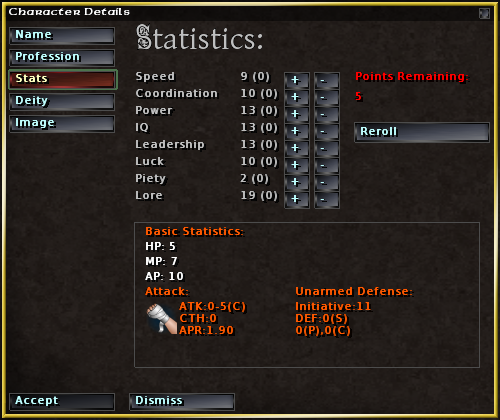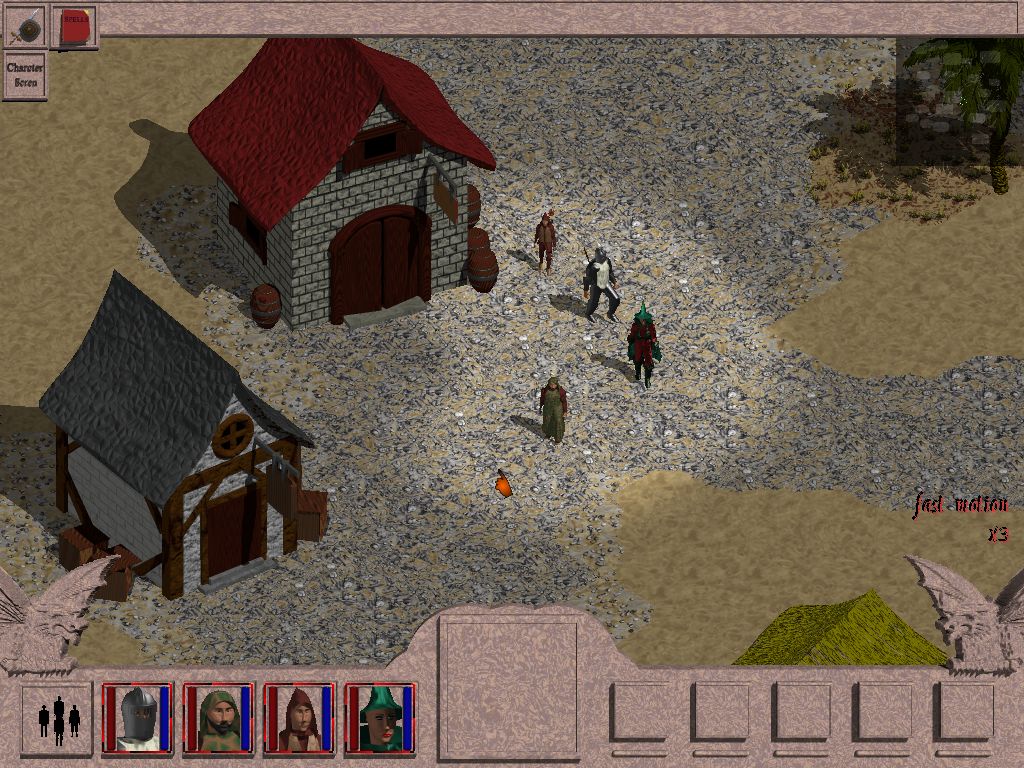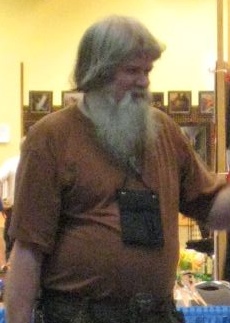|
Pool Of Radiance
''Pool of Radiance'' is a role-playing video game developed and published by Strategic Simulations, Inc (SSI) in 1988. It was the first adaptation of TSR's ''Advanced Dungeons & Dragons'' (''AD&D'') fantasy role-playing game for home computers, becoming the first episode in a four-part series of ''D&D'' computer adventure games. The other games in the " Gold Box" series used the game engine pioneered in ''Pool of Radiance'', as did later ''D&D'' titles such as the ''Neverwinter Nights'' online game. ''Pool of Radiance'' takes place in the Forgotten Realms fantasy setting, with the action centered in and around the port city of Phlan. Just as in traditional ''D&D'' games, the player starts by building a party of up to six characters, deciding the race, gender, class, and ability scores for each. The player's party is enlisted to help the settled part of the city by clearing out the marauding inhabitants that have taken over the surroundings. The characters move on from one ar ... [...More Info...] [...Related Items...] OR: [Wikipedia] [Google] [Baidu] |
Clyde Caldwell
Clyde Caldwell (born February 20, 1948) is an American artist. Self-described as a fantasy illustrator, he is best known for his portrayals of strong, sexy female characters. With his work at TSR in the 1980s, he is considered one of the artists contributing to fantasy art's "golden age". Early life Born on February 20, 1948 in Gastonia, North Carolina, Caldwell was interested in becoming an artist from an early age, "I became an artist sort of by default ... I couldn't do anything else! I was into music for awhile. I played the guitar for a local band. I also enjoyed writing both stories and songs. But drawing and painting were the easiest for me." Caldwell took up an interest in painting fantasy and science-fiction art while in junior high school. "My biggest influences back then were the covers of the Edgar Rice Burroughs books. I wanted to paint pictures like those covers. My parents had always encouraged me in my artwork, but they didn’t understand why I was painting s ... [...More Info...] [...Related Items...] OR: [Wikipedia] [Google] [Baidu] |
TSR, Inc
TSR, Inc. was an American game publishing company, best known as the original publisher of ''Dungeons & Dragons'' (''D&D''). Its earliest incarnation, Tactical Studies Rules, was founded in October 1973 by Gary Gygax and Don Kaye. Gygax had been unable to find a publisher for ''D&D'', a new type of game he and Dave Arneson were co-developing, so founded the new company with Kaye to self-publish their products. Needing financing to bring their new game to market, Gygax and Kaye brought in Brian Blume in December as an equal partner. ''Dungeons & Dragons'' is generally considered the first tabletop role-playing game (TTRPG), and established the genre. When Kaye died suddenly in 1975, the Tactical Studies Rules partnership restructured into TSR Hobbies, Inc. and accepted investment from Blume's father Melvin. With the popular ''D&D'' as its main product, TSR Hobbies became a major force in the games industry by the late 1970s. Melvin Blume eventually transferred his shares to ... [...More Info...] [...Related Items...] OR: [Wikipedia] [Google] [Baidu] |
Player Character
A player character (also known as a playable character or PC) is a fictional character in a video game or tabletop role-playing game whose actions are controlled by a player rather than the rules of the game. The characters that are not controlled by a player are called non-player characters (NPCs). The actions of non-player characters are typically handled by the game itself in video games, or according to rules followed by a gamemaster refereeing tabletop role-playing games. The player character functions as a fictional, alternate body for the player controlling the character. Video games typically have one player character for each person playing the game. Some games, such as multiplayer online battle arena, hero shooter, and fighting games, offer a group of player characters for the player to choose from, allowing the player to control one of them at a time. Where more than one player character is available, the characters may have distinctive abilities and differing st ... [...More Info...] [...Related Items...] OR: [Wikipedia] [Google] [Baidu] |
Origins Award
The Origins Awards are American awards for outstanding work in the game industry. They are presented by the Academy of Adventure Gaming Arts and Design at the Origins Game Fair on an annual basis for the previous year, so (for example) the 1979 awards were given at the 1980 Origins. The Origins Award is commonly referred to as a Calliope, as the statuette is in the likeness of the muse of the same name. Academy members frequently shorten this name to "Callie". History Originally, the '' Charles S. Roberts Awards'' and the Origins Awards were one and the same. Starting with the 1987 awards, the Charles S. Roberts were given separately, and they moved away from Origins entirely in 2000, leaving the Origins Awards as a completely separate system. In 1978, the awards also hosted the 1977 '' H. G. Wells awards'' for role-playing games and miniature wargaming. Categories The Origins Awards were originally presented at the Origins Game Fair in five categories: ''Best Professiona ... [...More Info...] [...Related Items...] OR: [Wikipedia] [Google] [Baidu] |
Isometric Graphics In Video Games And Pixel Art
Isometric video game graphics are graphics employed in video games and pixel art that use a parallel projection, but which angle the viewpoint to reveal facets of the environment that would otherwise not be visible from a top-down perspective or side view, thereby producing a three-dimensional (3D) effect. Despite the name, isometric computer graphics are not necessarily truly isometric—i.e., the , , and axes are not necessarily oriented 120° to each other. Instead, a variety of angles are used, with dimetric projection and a 2:1 pixel ratio being the most common. The terms "3/4 perspective", "3/4 view", "2.5D", and "pseudo 3D" are also sometimes used, although these terms can bear slightly different meanings in other contexts. Once common, isometric projection became less so with the advent of more powerful 3D graphics systems, and as video games began to focus more on action and individual characters. However, video games using isometric projection—especially ... [...More Info...] [...Related Items...] OR: [Wikipedia] [Google] [Baidu] |
Experience Point
An experience point (often abbreviated as exp or XP) is a unit of measurement used in some tabletop role-playing games (RPGs) and role-playing video games to quantify a player character's life experience and progression through the game. Experience points are generally awarded for the completion of missions, overcoming obstacles and opponents, and successful role-playing. In many RPGs, characters start as fairly weak and untrained. When a sufficient amount of experience is obtained, the character "levels up", achieving the next stage of character development. Such an event usually increases the character's statistics, such as maximum health, magic and strength, and may permit the character to acquire new abilities or improve existing ones. Levelling up may also give the character access to more challenging areas or items. In some role-playing games, particularly those derived from ''Dungeons & Dragons'', experience points are used to improve characters in discrete experienc ... [...More Info...] [...Related Items...] OR: [Wikipedia] [Google] [Baidu] |
Statistic (role-playing Games)
A statistic (or stat) in role-playing games is a piece of data that represents a particular aspect of a fictional character. That piece of data is usually a (unitless) integer or, in some cases, a set of dice. For some types of statistics, this value may be accompanied with a descriptive adjective, sometimes called a ''specialisation'' or ''aspect'', that either describes how the character developed that particular score or an affinity for a particular use of that statistic (like ''Specialisations'' in ''Ars Magica'' or ''Attribute Aspects'' in ''Aria''). Most games divide their statistics into several categories. The set of categories actually used in a game system, as well as the precise statistics within each category, vary greatly. The most often used types of statistic include: * Attributes describe to what extent a character possesses natural, in-born characteristics common to all characters. * Advantages and disadvantages are useful or problematic characteristics that ... [...More Info...] [...Related Items...] OR: [Wikipedia] [Google] [Baidu] |
Player Character
A player character (also known as a playable character or PC) is a fictional character in a video game or tabletop role-playing game whose actions are controlled by a player rather than the rules of the game. The characters that are not controlled by a player are called non-player characters (NPCs). The actions of non-player characters are typically handled by the game itself in video games, or according to rules followed by a gamemaster refereeing tabletop role-playing games. The player character functions as a fictional, alternate body for the player controlling the character. Video games typically have one player character for each person playing the game. Some games, such as multiplayer online battle arena, hero shooter, and fighting games, offer a group of player characters for the player to choose from, allowing the player to control one of them at a time. Where more than one player character is available, the characters may have distinctive abilities and differing st ... [...More Info...] [...Related Items...] OR: [Wikipedia] [Google] [Baidu] |
Party (role Playing Games)
A party is a group of characters adventuring together in a role-playing game. In tabletop role-playing, a party is composed of a group of player characters, occasionally with the addition of non-player character allies controlled by those players or by the gamemaster. In computer games, the relationship between the party and the players varies considerably. Online role-playing games or MMORPG parties are often, in the above sense, of the same constituency as tabletop parties, except that the non-player allies are always controlled to a lesser or greater extent by the computer AI. In single-player computer games, the player generally controls all party members to a varying degree. Examples of games which have parties include the tabletop RPG '' Vampire: the Requiem'', the single-player role-playing ''Baldur's Gate'' series, MMORPGs such as '' World of Warcraft'', '' Anarchy Online'' and '' Warhammer Online'', the open-world action-RPG '' Genshin Impact'', and the multi-player co ... [...More Info...] [...Related Items...] OR: [Wikipedia] [Google] [Baidu] |
Forgotten Realms
''Forgotten Realms'' is a campaign setting for the '' Dungeons & Dragons'' (''D&D'') fantasy role-playing game. Commonly referred to by players and game designers alike as "The Realms", it was created by game designer Ed Greenwood around 1967 as a setting for his childhood stories. Several years later, Greenwood brought the setting to publication for the ''D&D'' game as a series of magazine articles, and the first Realms game products were released in 1987. Role-playing game products have been produced for the setting ever since, as have various licensed products including novels, role-playing video game adaptations (including the first massively multiplayer online role-playing game to use graphics), comic books, and an upcoming film. Forgotten Realms is a fantasy world setting, described as a world of strange lands, dangerous creatures, and mighty deities, where magic and supernatural phenomena are quite real. The premise is that, long ago, planet Earth and the world of the ... [...More Info...] [...Related Items...] OR: [Wikipedia] [Google] [Baidu] |
Neverwinter Nights (AOL Game)
''Neverwinter Nights'' was the first multiplayer online role-playing game to display graphics, and ran from 1991 to 1997 on AOL. Gameplay ''Neverwinter Nights'' was developed with gameplay similar to previous games in the Gold Box series. Players begin by creating a character. After creating the character, gameplay takes place on a screen that displays text interactions, the names and current status of one's party of characters, and a window which displays images of geography marked with various pictures of characters or events. When combat occurs, gameplay switches to full-screen combat mode, in which a player's characters and enemies are represented by icons which move around in the course of battle. Development ''Neverwinter Nights'' was a co-development of AOL, Beyond Software, SSI, and TSR. It was the first multiplayer online role-playing game to display graphics. [...More Info...] [...Related Items...] OR: [Wikipedia] [Google] [Baidu] |
Game Engine
A game engine is a software framework primarily designed for the development of video games and generally includes relevant libraries and support programs. The "engine" terminology is similar to the term " software engine" used in the software industry. The game engine can also refer to the development software utilizing this framework, typically offering a suite of tools and features for developing games. Developers can use game engines to construct games for video game consoles and other types of computers. The core functionality typically provided by a game engine may include a rendering engine ("renderer") for 2D or 3D graphics, a physics engine or collision detection (and collision response), sound, scripting, animation, artificial intelligence, networking, streaming, memory management, threading, localization support, scene graph, and video support for cinematics. Game engine implementers often economize on the process of game development by reusing/ada ... [...More Info...] [...Related Items...] OR: [Wikipedia] [Google] [Baidu] |


.jpg)



